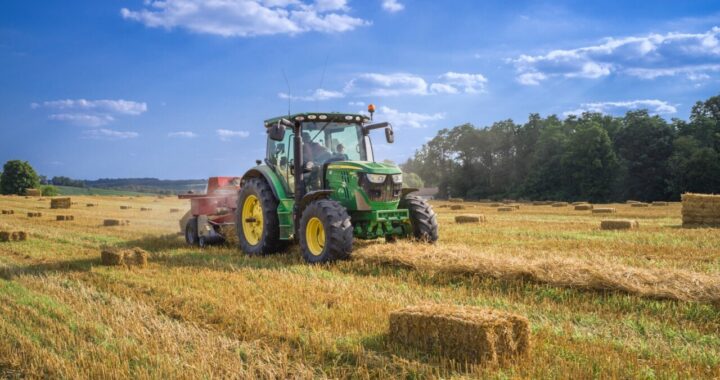We grew up thinking pesticides are great. They ensure that crops grow better and faster and that means more yield from the land. Farmer happy, supermarkets happy, consumer happy. But it’s not that simple. The use of pesticides has a major influence on the quality of water and soil. And water and soil are the two key factors for our (future) food production.
The European Commission wanted to halve the use of pesticides by 2030. But amid loud protests from farmers all over Europe, block roads and lit fires, it has been decided to take the proposal off the table. According to chairman Ursula von der Leyen, the plan has “become a symbol of polarization” and “more dialogue and a different approach are needed to continue” (source: NOS).
It does not happen often that the European Commission withdraws a bill completely. But the farmers’ protests are making an impression. Other measures to make agriculture more sustainable were also suspended earlier. The farmers complain that decisions are being made over their heads, that all kinds of rules and restrictions are suddenly imposed on them and that they receive insufficient support from the government. At the same time, scientists and nature organizations emphasize that the way agriculture is currently organized cannot be combined with achieving the climate objectives.
The farmers understand things have to change. But it seems they cannot keep up with Europe. The farmers first have to literally change their minds and that takes time and education. If you learn at school that pesticides are good, useful and essential for your business, it feels like you are being robbed when you are suddenly only allowed to use half of it. When there is also a huge lobby from an industry that wants to continue selling pesticides, this makes the proces of change even more difficult.
What exactly are pesticides and how do they work?
Pesticides are substances used to protect crops against pests, diseases and weeds. In the Netherlands, pesticides are called ‘crop protection products’. There are products based on chemically active substances and products based on microbiologically active substances (viruses, bacteria). The majority (35 percent) of crop protection products are used to combat fungi and bacteria.
The use of pesticides in agriculture is not new. Thousands of years ago, the Chinese used sulfur and the Romans used olive oil to prevent insects and mold formation. When bacteria were discovered in the seventeenth century through the invention of the microscope, the use of pesticides became even more conscious and effective due to a better understanding of biology.
Pesticide era
The major change from the use of natural materials and methods to the use of chemical and synthetic agents came in the nineteenth and twentieth centuries. Under the influence of the industrial revolution, larger, electric agricultural implements were developed and, in combination with the use of pesticides, harvests worldwide grew exponentially.
But the growth in harvest has a downside. Because the use of pesticides and large machines not only ensures larger harvests, it also ensures that global water and soil quality continues to deteriorate. Research by the Center for Environmental Sciences Leiden (CML) shows that the majority of waters in the Netherlands are contaminated with agricultural poisons. And the report of the Council for the Environment and Infrastructure (Rli) shows that the Dutch soil suffers from acidification, eutrophication, desiccation, compaction and increased vulnerability…
The influence of pesticides on the quality of water and soil is multifaceted. A major problem is that they not only work on the farmer’s land, but also pollute the air, seep into surrounding nature reserves and end up in the groundwater. They also unintentionally harm plants and animals that are important to nature. Insects such as wild bees, bumblebees, butterflies and hoverflies suffer from the use of chemical pesticides. These pollinators are essential for agriculture, because without pollinators no fruits and vegetables.
Pesticides also directly influence human health. A commonly used agent, for example, is glysophate. Although it is prohibited for private use, it is still widely used in agriculture, while several studies show that the substance is poisonous and is linked to serious diseases. It is generally known that farmers, gardeners and people who live near (regular) agricultural plots have a greatly increased risk of Parkinson’s.
Soil compaction
A side effect of pesticides that many people are not aware of is called soil compaction. Soil compaction occurs when the soil is compressed too much by heavy machines used in the fields to spray pesticides on crops. Under the weight of large tractors, the soil becomes so dense and compact that the water balance is disturbed and worms and other soil insects cannot live. The soil, as it were, dies and this has direct consequences for the growth and yield of crops.
Finally, agricultural lands are increasingly suffering from soil erosion: the blowing or washing away of the top fertile soil layer by wind and (rain) water. In a natural ecosystem, roots of trees and shrubs hold the soil. But modern fields lack trees and shrubs, making agricultural land increasingly sensitive to erosion. Climate change is increasing the number of storms and heavy rainfall, which only increases the impact of soil erosion.
All in all, it is clear that pesticide use must be reduced. The European Commission wants this for a reason. But how to get farmers on board? That’s what it’s about. The farmers say: ‘Without the farmer there is no food’, but in fact it is: ‘Without nature there is no food’. Farming seems to have forgotten that it is nature that nourishes us, not the other way around. All the chemicals and large machines have removed the farmer from this basic insight, a respectful starting point. And there lies the great challenge for the future: how do we bring the modern farmer closer to nature again?
Photo from Randy Fath via Unplash

